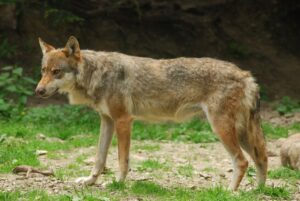The Italian wolf is at risk again, but this time the culprit is hybridization
 The Italian wolf is at risk. Just when the animal had resumed populating the Apennines of the Peninsula, a new alarm was triggered that put its existence at risk: hybridization. This is the result of a recent study conducted by the Sapienza University of Rome (here an excerpt: Lupo: l’ibridazione con il cane domestico mette a rischio la conservazione della specie) in collaboration with the National Park of the Tuscan-Emilian Apennines, the Higher Institute for Environmental Research and Protection (Ispra) and the Center Nationale de la Recherche Scientifique (France), published in The Journal of Wildlife Management (Estimating Admixture at the Population Scale: Taking Imperfect Detectability and Uncertainty in Hybrid Classification Seriously). An alarm already highlighted by another project, the “Mirko Lupo” (http://www.lifemircolupo.it/), carried out on the field in the Tuscan-Emilian Apennines and aimed at minimizing the impact of canine strays (which then generates hybridization) on wolf conservation in Italy.
The Italian wolf is at risk. Just when the animal had resumed populating the Apennines of the Peninsula, a new alarm was triggered that put its existence at risk: hybridization. This is the result of a recent study conducted by the Sapienza University of Rome (here an excerpt: Lupo: l’ibridazione con il cane domestico mette a rischio la conservazione della specie) in collaboration with the National Park of the Tuscan-Emilian Apennines, the Higher Institute for Environmental Research and Protection (Ispra) and the Center Nationale de la Recherche Scientifique (France), published in The Journal of Wildlife Management (Estimating Admixture at the Population Scale: Taking Imperfect Detectability and Uncertainty in Hybrid Classification Seriously). An alarm already highlighted by another project, the “Mirko Lupo” (http://www.lifemircolupo.it/), carried out on the field in the Tuscan-Emilian Apennines and aimed at minimizing the impact of canine strays (which then generates hybridization) on wolf conservation in Italy.
As is known, the domestic dog is the result of a strong selection carried out by man and millennia of reproductive isolation from the wolf, during which the animal has developed behaviors more appropriate to human needs and profoundly different from its ancestor wild. But from a biological point of view the dog and the wolf are the same species and under certain circumstances they can mate and generate fertile hybrids. And this is what has been happening, in a massive way, for several years, both for the expansion of the wolf in more populated areas, and for the phenomenon of canine strays. The two animals, wolf and dog, have more opportunities to meet today than in the past. And hybridization is almost inevitable.
Suffice it to say that in the study conducted by the La Sapienza University of Rome, on the basis of 152 collected samples, corresponding to 39 wolves in 7 different packs, the researchers estimated a prevalence of hybridization of 70%, with hybrid individuals present in at least 6 of the 7 flocks monitored. Furthermore, through the genealogical reconstruction it has been ascertained that in at least two of these herds the hybrid individuals enjoy the status of breeding, and are therefore able to pass on the genetic variants of canine origin to subsequent generations.
The results of the study highlight how essential it is not to ignore the phenomenon and to use all the best management skills and abilities to preserve the genetic integrity of the wolf. The risk of genomic extinction today exceeds, in fact, that of demographic extinction. And if in the early 70s, when the wolf seemed to have almost disappeared from Italy, an attempt was made to protect the species, today it is the same genetic identity of the wolf that is endangered as a consequence, paradoxically, of the expansive dynamics of the species itself. In addition to the high number of stray dogs.


